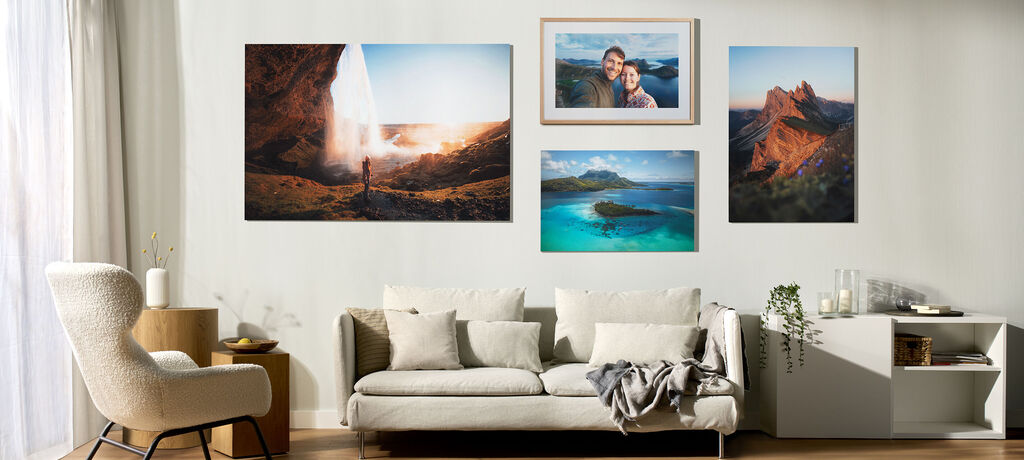
Photography Tips
Inspirational Still Life Photography Ideas
6th August 2025
Still life photography gives you a high degree of control over your image’s composition. This makes it much easier to focus on your technique without the added pressure of moving subjects or unpredictable lighting conditions. Plus, once you combine the right idea with your new skills, you’ll create photos that come to life. Here, we share inspiration to get you started.
What is Still Life Photography?
Still life photography is the art of creating images of non-living objects. That can mean anything from household knick knacks to musical instruments, or even vintage items like typewriters. Popular sub-genres today include flower and food photography, although there’s so much more to explore.
Although this genre has its roots in still life painting, it isn’t restricted or dated. Contemporary compositions can be playful or sombre, minimalist or bursting with shapes and colours from every angle. The photographer also has lots of control over the subjects, lighting and techniques, making it the ideal opportunity to learn and get creative.
Still Life Photography Ideas
When you’re putting together the subjects yourself, it can be difficult to find inspiration. Testing out a few of the approaches below can help you build a composition.
Choose personal objects
Don’t feel constrained by traditional subject matter like flowers or fruit bowls. Choose objects that have personal significance, such as baby’s first shoes or antique family heirlooms. To create a playful image, head to the toy box or rearrange fridge magnets. Take your glass ornaments and pieces of jewellery to take advantage of their shape, shade and refraction.
For a totally unique image, get crafty and create your own objects from household items such as corks, paper or buttons.
Look for colour, texture and patterns
Rather than looking at the object as a whole, look for colours, textures and patterns that you like. Keep an open mind and before you know it, you’ll be spotting still life photography ideas everywhere. From the vibrant colours of autumn leaves to the textured fibres of rope and the patterns on your soft furnishings.
Go macro
Macro photography is another great way to take an abstract view of your objects. Extreme close-ups can make well-known items unrecognisable, allowing you to explore their surface textures and colours instead. It can also open up a world that the human eye can’t see, creating a photo that’s totally unexpected.
Try out monochrome
Shooting in black and white can transform your subject by encouraging the viewer to focus on lines, textures and patterns. Monochrome doesn’t mean just sticking to these shades. Choose a single colour you love, such as gold or sepia, and leverage it to create a mood or highlight different areas of a well-known object.
Think about shapes
Rather than taking objects at face value, consider their form. Look for simple shapes like circles, triangles and squares and try combining similar or different forms together. Whether you decide to create a complimentary or disjointed composition, thinking about shape first can be a good starting point to a captivating image.
Switch up the lighting
Literally seeing objects in a new light can inspire your composition. Put light sources to different distances from your objects to create various effects. Use reading lamps to create spotlights over areas of focus. Take the opportunity to play with shadows and highlights. Experiment with natural light by diffusing it from a window.
Bouncing light off white or black surfaces is a great way to create different moods. Try using sheets and bounce boards off-camera, at different angles, to see how they impact the lighting effects. If you’re just starting out with photography, you might want to avoid reflective surfaces such as metal or glass, as they can be difficult and time-consuming to remove.
Head outdoors
Although this will give you less control over the conditions, photographers who’ve mastered still life indoors may find heading outside creatively freeing. From playground swings and roundabouts to cars and discarded rubbish, they can all be reframed to create engaging compositions. Return to the same spot at different times of day or in various weather conditions to see what effect this has on your shots.
Experiment with concepts
Got an idea you’ve never seen in real life? Try to recreate it using everyday objects. Tell a story or try to make viewers stop and think. Turn the normal on its head by putting a vacuum cleaner on a chair, a vase upside down with the flowers on top or a fried egg under a frying pan. To explore abstract compositions, shoot your setup from as many different angles as you can.
Still Life Photography Tips
Whether you’re new to still life photography or want to refine your technique, here are some tips to help you capture that perfect shot.
- Play with your composition: Rearrange your items as many times as you need. After all, there’s no need to worry about your subjects getting tired or bored! Start with one item, shoot, then add in extras one at a time until you achieve the shot that you want.
- Choose your backdrop carefully: Once you’ve chosen your subject, pay special attention to the background you place it against. The colour and texture you choose can have a huge impact on the overall mood and lighting of your image.
- Set up for success: Using a tripod and remote shutter means you can use longer shutter speeds without having to worry about blur. Keep your ISO low, set a narrow aperture and use manual focus to sharpen your favourite part of the setup.
Showcase Your Still Life Photos
After all that effort, you’ll want to show off your still life photos. Collecting them together in a portfolio will create an interesting and personal coffee table book. Alternatively, you could create an unexpected decor scheme by hanging a piece of wall art over the object you shot. Turning your photos into jigsaw puzzles also makes a great game for loved ones to unveil your object piece by piece.
Then, once you’ve mastered the art of still life photography, you could start taking them outside to capture moving objects and landscapes.












